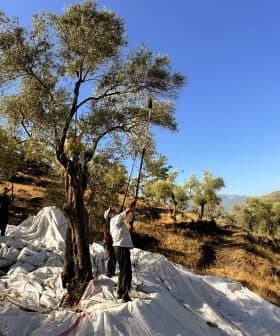Droughts Are More Frequent, Lasting Longer and Accelerating Water Shortages, U.N. Says
The latest UNCCD report reveals that droughts are becoming more frequent and lasting longer, with significant acceleration in their impacts over the past few decades, leading to major economic losses and displacement risks for billions of people worldwide. The report emphasizes the urgent need for comprehensive solutions, proactive drought management, and changes in human behavior, including shifting to plant-based diets and adopting sustainable agricultural practices to mitigate the worsening effects of droughts on both human societies and ecological systems.
Droughts are happening more often and are lasting longer, according to the latest United Nations Convention to Combat Desertification (UNCCD) report.
Released at the 15th Conference of Parties (COP15) in Abidjan, in Côte d’Ivoire, the Drought in Numbers report also found that the worsening effects of these droughts have significantly accelerated in recent decades.
We must build and rebuild our landscapes better, mimicking nature wherever possible and creating functional ecological systems.
According to the report’s authors, droughts that occurred between 1970 and 2019 have provoked approximately 650,000 deaths and represent 15 percent of the extreme events classified as “natural disasters” reported during those years.
From 1998 to 2017, the global economy has lost $124 billion (€118 billion) because of droughts. Their impact is of such magnitude in developing countries that experts believe 2.3 billion people are coping with reduced water availability in 2022.
See Also:Record Heatwave and Drought in Pakistan Threaten Crops and Olive Farming“In the past century, more than 10 million people died due to major drought events, which also generated several hundred billion dollars in economic losses worldwide. And the numbers are rising,” the United Nations said.
UNCCD scientists estimated that 160 million children are exposed to severe and prolonged droughts, which boost water scarcity both for populations and agriculture. Given the current trend, the UNCCD estimates that 25 percent of children will live in areas subjected to extreme water shortages by 2040.
Furthermore, significant human populations will leave their homes in the next few years, given the diminishing water availability. By 2030, it is estimated that there will be 700 million people at risk of being displaced due to drought.
Researchers warned that if the current trend should be confirmed, droughts will affect up to 75 percent of the human population by 2050, with 4.8 to 5.7 billion people living in water scarcity for at least one month every year. Today, that figure remains at 3.6 billion people.
By then, the UNCCD predicts there will be more mass migration happening because of the effects of the droughts in combination with other drivers such as water scarcity, reduced farming yields, sea-level rising and overpopulation.
The impact of droughts on the environment also goes beyond the direct effects on human life. For example, researchers evaluated that in the last 40 years, 12 million hectares of land have been lost to drought and desertification.
While most of the populations directly affected by the droughts live in developing countries, according to the UNCCD report, no region is considered safe from droughts.
Africa has seen 44 percent of the significant drought events in the last century. Still, dozens of such events hit Europe in the same period, affecting 15 percent of its land and 17 percent of its population.
“In the United States, drought-induced crop failures and other economic losses have totaled $249 billion (€236 billion) since 1980 alone,” the U.N. said. “Over the past century, Asia was the continent with the highest total number of humans affected by drought.”
The risk of droughts is rising in many areas of the world due to climate change, which exacerbates the conditions that frequently lead to droughts. In the next few decades, 129 countries will experience an increase in drought length and severity.
Coincidentally, some areas with the highest risk of drought are also undergoing quick population expansion, and food security is seriously at risk.
According to the UNCCD report, should global surface temperatures rise 3 ºC above the pre-industrial average, drought losses could be five times higher than they currently are, with the most significant increase in the Mediterranean and the Atlantic regions of Europe.
UNCCD Executive Secretary Ibrahim Thiaw said the new report brings the full scope of the challenges faced in the following decades into focus as what is happening is “not only affecting human societies but also the ecological systems upon which the survival of all life depends, including that of our own species.”
Thiaw emphasized how countries should focus on comprehensive solutions such as “land restoration, which addresses many of the underlying factors of degraded water cycles and the loss of soil fertility.”
“We must build and rebuild our landscapes better, mimicking nature wherever possible and creating functional ecological systems,” he added.
The UNCCD executive secretary also emphasized how beyond restoration, “there needs to be a paradigm shift from ‘reactive’ and ‘crisis-based’ approaches to ‘proactive’ and ‘risk-based’ drought management approaches involving coordination, communication and cooperation, driven by sufficient finance and political will.”
UNCCD experts also stressed how relevant it is for humans to “change their relationship with food, fodder and fiber” and move toward adopting “plant-based diets and stemming the consumption of animals.”
They wrote that that should happen while sustainable and efficient agricultural management techniques are applied to grow more food on less land with less water.
“Early-warning systems that work across boundaries, new technologies to guide decisions with precision and sustainable funding to improve drought resilience at the local level are also key actions,” they concluded.









